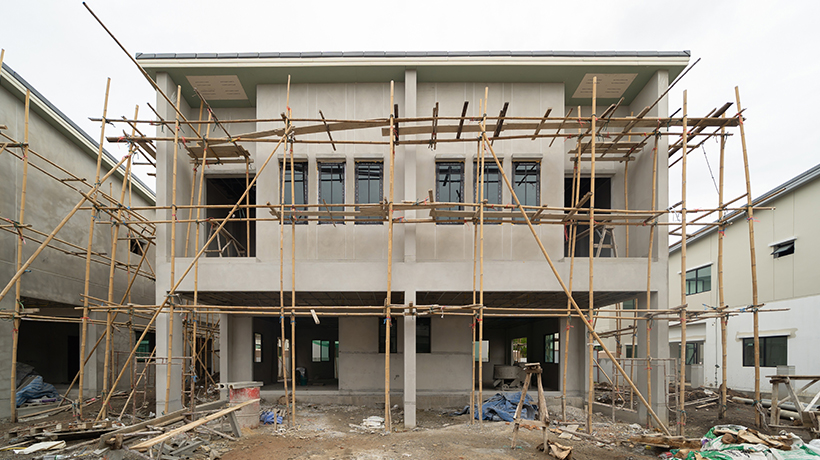Introduction
When building your dream home, every decision counts—be it the location of the plot or finishing paint colour. This guide helps you navigate the question of how to construct a house without compromising on the essentials.
Every decision while building your home—from selecting the plot to finalising the interior—affects your home’s longevity, safety, and comfort. Cutting corners in the wrong areas can lead to future expenses, safety risks, and regrets.
If you’re wondering what you should never compromise on when building a home, here are six non-negotiable factors to keep in mind during every stage of construction.
1. The right location: Your permanent address
Your home’s location determines accessibility, convenience, and resale value. Before purchasing land, consider:
1. Proximity: Is it close to your workplace, schools, hospitals, and daily essentials like markets and banks?
2. Infrastructure: Does the area have proper roads, electricity, water supply, and sewage systems?
3. Safety: Is the neighbourhood well-lit and secure?
4. Future growth: Are there upcoming developments that could increase property value?
5. Climate and environment: Is the land prone to flooding or waterlogging?
2. Legal documentation and permits: Avoid costly delays
Before starting construction, ensure that all legal paperwork is in order to prevent disputes or government penalties.
1. Land title and sale deed: Verify ownership and ensure the plot is free from liabilities.
2. Zoning and building regulations: Get approvals from the local municipal authority for your house plan.
3. Environmental and safety norms: Ensure compliance with local environmental and construction safety laws.
3. Smart site planning: The foundation of a strong home

A well-planned site ensures structural integrity and long-term comfort. It is a crucial part of the steps of construction and should never be overlooked. Key factors to consider:
1. Soil testing: Determines foundation strength and whether soil improvement is required.
2. Home orientation: Position windows for cross-ventilation and natural lighting to reduce energy costs.
3. Climate considerations: Avoid heat-trapping designs in hot climates and ensure earthquake-resistant foundations in seismic zones.
4. Design for today and tomorrow
Your home’s layout should reflect your lifestyle while also being future-proof. A well-planned design prevents costly renovations later.
1. Efficient spatial planning: The kitchen should be near the dining area, storage should be easily accessible, etc.
2. Flexible spaces: Plan for home offices, guest rooms, or multipurpose areas.
3. Provision for expansion: Leave room for adding extra floors or extensions as your family grows.
4. Smart home features: Plan for automation, security systems, and home networking.
5. High-quality materials: The backbone of your home
Using substandard materials may save costs initially but will lead to major expenses later. No matter where you are in the steps to building a house, ensure quality at every stage:
1. Foundation and structure: Use high-grade steel and the right concrete mix for durability.
2. Walls and roofing: Opt for strong bricks (AAC blocks or fly ash bricks) and weather-resistant roofing materials.
3. Doors and windows: Use termite-resistant wood or high-quality uPVC frames for longevity.
4. Paint and finishes: Go for weatherproof exterior paints and moisture-resistant interior paints.
6. Reliable plumbing, electrical work, and workmanship

Poor plumbing and electrical work can lead to frequent breakdowns, safety risks, and costly repairs. This is one of the most crucial building construction steps, and you should never compromise on:
1. Pipes and fittings: Use high-quality plumbing materials to avoid leaks and water damage.
2. Electrical wiring: Use certified, fire-resistant wires to prevent short circuits.
3. Workmanship: Hire skilled professionals for plumbing, electrical, and finishing work to ensure a smooth and durable finish.

Build it right for a secure future
If you're wondering how to construct a house without unnecessary future expenses, the key is to focus on quality, planning, and expert guidance.
Your home is both an emotional and financial investment. While budgeting is essential, compromising on critical factors like location, legal permits, materials, and skilled professionals can lead to hidden costs and long-term issues.
By making informed decisions today, you ensure a safe, comfortable, and durable home for years to come.
Related articles
Sign up for the newsletter
If you want relevant updates occasionally, sign up for the private newsletter. Your email is never shared.
















